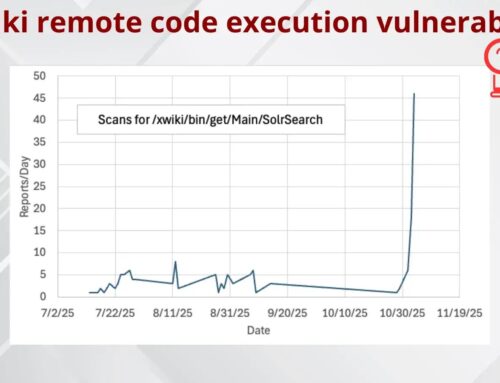
Serial Hacker Jailed for Hacking and Defacing Organizations’ Websites
The digital frontier, while offering unprecedented connectivity and innovation, remains a battleground where the stakes are incredibly high. Organizations, from critical government institutions to private enterprises, consistently face a deluge of cyber threats. One such pervasive menace is the malicious act of website hacking and defacement, a crime that not only disrupts operations but also erodes public trust and brand reputation. Recently, a significant victory in this ongoing war was achieved with the sentencing of a prolific serial hacker, underscoring the relentless efforts of cybersecurity professionals and law enforcement to bring cybercriminals to justice.
The Case Against Al-Tahery Al-Mashriky: A Glimpse into Sophisticated Cybercrime
The cybersecurity community has closely watched the progression of a multi-continental cybercriminal operation, culminating in the apprehension and sentencing of Al-Tahery Al-Mashriky. Operating under various aliases and affiliated with the extremist hacking collective “Yemen Cyber Army,” Mashriky, a 26-year-old from Rotherham, South Yorkshire, was a key figure in this sophisticated campaign. His activities specifically targeted and defaced numerous government institutions and private organizations, marking a significant and damaging footprint across the digital landscape.
Mashriky pleaded guilty to nine charges related to his hacking activities, leading to a sentence of 20 months imprisonment. This conviction serves as a stark reminder that cybercrime, even when cloaked in anonymity, carries severe real-world consequences. The nature of his operation, involving coordinated defacements, highlights the persistent threat posed by ideologically motivated or financially driven threat actors.
Understanding Website Defacement: More Than Just a Prank
Website defacement is an attack where an unauthorized party alters the visual appearance of a website. While it might seem superficial, its impact extends far beyond mere cosmetic changes:
- Reputational Damage: A defaced website can severely tarnish an organization’s image, leading to a significant loss of trust among users, customers, and stakeholders.
- Data Breach Indicator: Defacement often serves as a superficial manifestation of a deeper compromise. It can indicate a successful initial breach, potentially preceding or accompanying data exfiltration or the deployment of malware.
- Disruption of Services: Critical services, e-commerce platforms, or information dissemination channels can be rendered inoperable, leading to financial losses and operational downtime.
- Propaganda and Misinformation: As seen with groups like the “Yemen Cyber Army,” defaced websites can be used as platforms to propagate political messages, extremist ideologies, or misinformation, further complicating the incident response.
- Financial Costs: The costs associated with incident response, forensic analysis, remediation, and rebuilding trust can be substantial.
Common Attack Vectors Leading to Website Defacement
While the precise methods employed by Al-Mashriky are not publicly detailed, common vulnerabilities and attack vectors are frequently exploited by threat actors to achieve website defacement. Organizations must understand these to fortify their defenses:
- SQL Injection: Injecting malicious SQL code into input fields to manipulate database queries, potentially leading to unauthorized access or modification of website content. For example, some vulnerabilities have been cataloged as CVE-2022-26369 in certain content management systems.
- Cross-Site Scripting (XSS): Injecting client-side scripts into web pages viewed by other users. While primarily used for session hijacking or phishing, persistent XSS can sometimes lead to content manipulation. Related vulnerabilities include those such as CVE-2023-38545 in specific web applications.
- Weak Credential Management: Brute-forcing weak administrative passwords or exploiting default credentials to gain unauthorized access to the content management system (CMS) or web server.
- Server-Side Request Forgery (SSRF): Forcing the server to make requests to internal or external resources, potentially leading to information disclosure or unauthorized actions, which could facilitate defacement. For instance, CVE-2023-28263 identified an SSRF vulnerability in a popular web framework.
- File Upload Vulnerabilities: Exploiting lax controls on file uploads to inject malicious scripts or web shells that can execute commands on the server and modify website content.
- Outdated Software and Unpatched Vulnerabilities: Exploiting known vulnerabilities in web servers, CMS platforms (like WordPress, Joomla, Drupal), plugins, or themes. Many prolific defacement campaigns leverage readily available exploits for public CVEs like CVE-2021-44228 (Log4Shell) or older but still prevalent issues such as CVE-2017-5638 (Apache Struts).
Remediation Actions and Prevention Strategies
Protecting web assets from defacement and broader cyberattacks requires a multi-layered, proactive approach. Organizations should implement the following strategies:
- Regular Patch Management: Keep all software, including operating systems, web servers (Apache, Nginx, IIS), CMS platforms, plugins, and themes, updated with the latest security patches. This mitigates risks from known vulnerabilities such as those listed in the CVE database.
- Strong Access Control and Authentication: Implement strong, unique passwords for all administrative accounts, enforce multi-factor authentication (MFA), and regularly audit user permissions.
- Web Application Firewall (WAF): Deploy a WAF to filter and monitor HTTP traffic between a web application and the Internet. A WAF can detect and block common web-based attacks like SQL injection and XSS.
- Input Validation and Output Encoding: Rigorously validate all user input to prevent injection attacks and properly encode output to prevent XSS.
- Secure File Uploads: Implement strict validation for file types, sizes, and content, and store uploaded files outside the web root or with restricted execution permissions.
- Intrusion Detection/Prevention Systems (IDS/IPS): Use IDS/IPS to monitor network traffic for suspicious activity and block malicious requests in real-time.
- Regular Security Audits and Penetration Testing: Conduct periodic security assessments, vulnerability scans, and penetration tests to identify and remediate weaknesses before attackers can exploit them.
- Principle of Least Privilege: Grant users and applications only the minimum necessary permissions to perform their functions.
- Content Security Policy (CSP): Implement a robust CSP to mitigate XSS and data injection attacks by specifying allowed sources for various content types.
- Server Hardening: Configure web servers and operating systems securely by disabling unnecessary services, closing unused ports, and applying security best practices.
- Data Backup and Disaster Recovery: Regularly back up website data and configuration files, and establish a clear disaster recovery plan to quickly restore services in case of a successful attack.
Tools for Detection and Mitigation
Effective defense against website defacement and underlying compromises often involves a combination of automated tools and manual expertise. The following table outlines some key tools:
| Tool Name | Purpose | Link |
|---|---|---|
| Nessus | Vulnerability Scanning & Management | https://www.tenable.com/products/nessus |
| OpenVAS | Open Source Vulnerability Scanner | https://www.greenbone.net/ |
| ModSecurity | Open Source Web Application Firewall (WAF) | https://modsecurity.org/ |
| OWASP ZAP | Dynamic Application Security Testing (DAST) | https://www.zaproxy.org/ |
| Burp Suite | Web Security Testing (Proxy, Scanner, Repeater) | https://portswigger.net/burp |
| Sucuri SiteCheck | Website Malware Scanner & Security Monitor | https://sitecheck.sucuri.net/ |
| Cloudflare | CDN, DDoS Protection, and WAF Services | https://www.cloudflare.com/ |
The Ongoing Fight Against Cybercrime
The sentencing of Al-Tahery Al-Mashriky marks a significant win for law enforcement and cybersecurity agencies globally. It demonstrates that determined investigative work can breach the veil of anonymity often sought by cybercriminals. This case reinforces the critical need for robust cybersecurity postures within organizations and continued collaboration between the public and private sectors in combating advanced persistent threats. As adversaries evolve their tactics, so too must our collective defenses.





